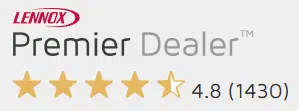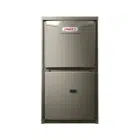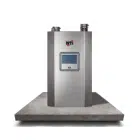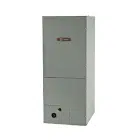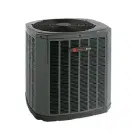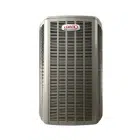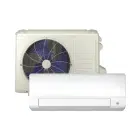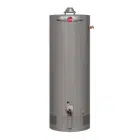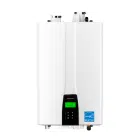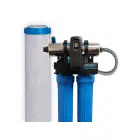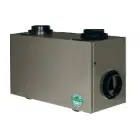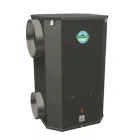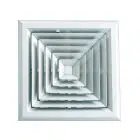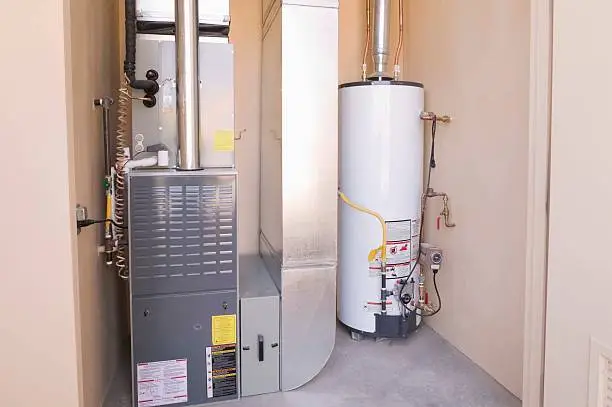
Table of Contents
In the chilly Canadian winters, having a reliable and efficient gas furnace is essential for ensuring comfort and warmth at home. Whether you’re considering upgrading your existing system or installing a new gas furnace, understanding the associated costs is crucial. In this article, we’ll delve into the current trends and factors influencing the installation cost of a new gas furnace in 2024.
Understanding Gas Furnace Installation Costs
Gas furnace prices for installation involve several key components and processes. A typical installation includes mounting the furnace, connecting it to the ductwork, installing vents, and setting up the thermostat. Additionally, electrical connections and gas lines need to be properly configured to ensure safe operation. The complexity of the installation process can vary depending on factors such as the size of the home, existing infrastructure, and any additional features desired.
Current Trends in Gas Furnace Installation
Gas furnace prices for installation are subject to fluctuation, influenced by a multitude of factors including market dynamics, technological innovations, and regulatory shifts. As of 2024, our observation indicates a notable trend towards increasing installation expenses, primarily propelled by the escalation of material and labor costs across the industry.
Rising Material and Labor Expenses
One significant contributor to the upward trajectory of installation costs is the consistent escalation of material and labor expenses. This trend is reflective of broader economic factors such as inflation, supply chain disruptions, and increased demand for skilled labor within the construction and HVAC sectors. The rising costs of raw materials, including metals, plastics, and electronic components, have had a direct impact on the overall cost of manufacturing gas furnaces. Similarly, the demand for skilled HVAC technicians has intensified, leading to higher labor rates for installation services.
Introduction of Energy-Efficient Models and Smart Technologies
Another notable trend shaping gas furnace installation costs in 2024 is the proliferation of energy-efficient models and smart technologies. With growing awareness of environmental sustainability and energy conservation, consumers are increasingly inclined towards investing in furnaces with higher efficiency ratings and advanced features. While these modern furnaces may entail higher upfront costs compared to traditional models, they offer substantial long-term savings on energy bills.
Energy-efficient furnaces leverage innovative technologies such as variable-speed motors, advanced heat exchangers, and intelligent control systems to optimize performance and minimize energy consumption. Additionally, the integration of smart technologies, such as Wi-Fi-enabled thermostats and home automation systems, adds convenience and control for homeowners, albeit at a premium price point.
Regulatory Changes and Standards Compliance
Regulatory changes and industry standards also play a pivotal role in shaping gas furnace installation costs. Governments at both federal and provincial levels continue to implement stringent energy efficiency regulations and emissions standards aimed at reducing greenhouse gas emissions and promoting sustainable energy practices. Compliance with these regulations often necessitates the adoption of newer, more efficient furnace models, which may incur higher installation costs due to advanced technologies and enhanced manufacturing processes. Moreover, adherence to safety codes and licensing requirements further contributes to the overall cost of installation by ensuring the integrity and reliability of HVAC systems.
Navigating the Landscape
In light of these prevailing trends, homeowners and HVAC professionals alike are tasked with navigating the evolving landscape of gas furnace installation costs. While the prospect of higher upfront expenses may seem daunting, it’s essential to consider the long-term benefits and savings associated with energy-efficient models and smart technologies. Moreover, seeking quotes from multiple reputable HVAC contractors and exploring financing options can help mitigate the financial burden of installation costs while ensuring quality service and reliable performance.
Reach out to HVAC Service Solutions for a personal consultation on a furnace installation in your particular case via the link below.
Average Gas Furnace Prices in 2024

The installation cost of a new gas furnace can vary widely depending on various factors such as the size of the home, existing infrastructure, and desired features. Here’s a breakdown of average installation costs across different scenarios:
Standard Installation in a Moderately Sized Home
For a typical installation in a moderately sized home with existing ductwork and minimal additional features, homeowners can expect to pay between $2,500 and $5,000. This range accounts for factors such as the size and efficiency rating of the furnace, as well as regional variations in labor costs and market demand.
Extensive Ductwork Modifications or Retrofitting
In cases where the home requires extensive ductwork modifications or retrofitting to accommodate the new gas furnace, installation costs can escalate significantly. Homeowners may need to budget upwards of $5,000 to $7,000 or more for such complex installations. Factors such as the accessibility of ductwork, the need for additional ventilation, and the presence of structural obstacles can all influence the final cost.
Premium Furnace Models with Advanced Features
Opting for a premium gas furnace model with advanced features such as variable-speed motors, high-efficiency heat exchangers, and smart technology integration can also impact installation costs. Homeowners interested in these advanced options should anticipate spending above $5,000, with total costs potentially exceeding $7,000 for top-of-the-line models. While the initial investment may be higher, the long-term energy savings and enhanced comfort provided by these advanced furnaces can justify the additional expense.
In summary, the average installation cost of a new gas furnace can vary significantly depending on factors such as home size, existing ductwork, desired features, geographic location, and market conditions.
Check out our previous guide on furnace prices for more detailed information via the link below.
https://thehvacservice.ca/how-much-does-a-furnace-installation-cost/
Factors Influencing Installation Costs
The installation cost of a new gas furnace is influenced by a multitude of factors that homeowners should consider when budgeting for this essential home improvement project. Understanding these factors can help ensure an accurate assessment of installation costs and facilitate informed decision-making. Here are some key factors influencing gas furnace installation costs:
- Furnace Size and Efficiency Ratings: Larger and more energy-efficient models typically come with higher upfront costs but offer greater long-term savings on energy bills.
- Brand and Model Selection: Premium brands and models with advanced features may command higher prices for both the unit and installation.
- Complexity of Installation: Homes requiring extensive ductwork modifications or retrofitting may incur higher labor costs.
- Labour Costs and Local Market Conditions: Installation costs can vary depending on the availability of skilled labor and prevailing market rates in your area.
- Additional Features: Adding features such as smart thermostats, air purification systems, or zoning controls can increase installation costs but may enhance comfort and energy efficiency.
Tips for Minimizing Installation Costs
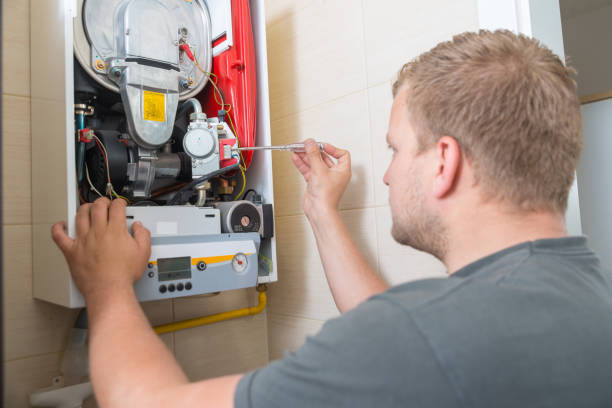
To minimize installation costs while ensuring optimal performance and efficiency, consider implementing the following tips:
- Choose an Energy-Efficient Model: Selecting a high-efficiency gas furnace can lead to significant long-term savings on energy bills. Additionally, energy-efficient models may qualify for rebates or incentives offered by utility companies or government programs.
- Obtain Multiple Quotes: Before committing to a contractor, obtain quotes from several reputable HVAC professionals. Comparing prices and services can help you find the most competitive offer that meets your budget and requirements.
- Optimize Existing Infrastructure: Ensure that your home’s ductwork is properly insulated and sized to maximize airflow and efficiency. By optimizing existing infrastructure, you can minimize the need for extensive modifications during installation, thereby reducing overall costs.
- Explore Financing Options: Many HVAC companies offer financing plans or rebates to help offset the upfront cost of installation. Exploring financing options can make the investment in a new gas furnace more manageable and affordable.
- Schedule Regular Maintenance: To prevent costly repairs and extend the lifespan of your gas furnace, schedule regular maintenance with a qualified technician. Routine maintenance not only ensures optimal performance but also helps identify potential issues early, saving you money on future repairs.
Conclusion
In conclusion, the average installation cost of a new gas furnace can vary depending on factors such as home size, existing infrastructure, and desired features. However, homeowners can expect to pay between $2,500 and $5,000 for a standard installation in a moderately sized home.
Ready to upgrade to a new gas furnace? Contact HVAC Service Solutions for expert guidance and professional installation tailored to your specific needs and budget. Our team of experienced professionals is committed to delivering superior service and ensuring your home stays warm and comfortable all year round. Schedule your consultation today!
Frequent Asked Questions
What factors influence the installation cost of a new gas furnace?
The installation cost of a new gas furnace is influenced by a range of factors, including:
- Furnace Size and Efficiency Ratings: Larger furnaces with higher efficiency ratings typically come with higher upfront costs due to their increased heating capacity and advanced technology, which translates to higher material and manufacturing expenses.
- Brand and Model Selection: Premium brands and models known for their reliability, durability, and advanced features may command higher prices for both the unit and installation services. However, investing in a reputable brand can provide homeowners with confidence in the longevity and performance of their furnace.
- Complexity of Installation: Homes requiring extensive ductwork modifications, retrofitting, or customization to accommodate the new gas furnace may incur higher labor costs. Factors such as the accessibility of ductwork, structural obstacles, and the need for additional ventilation can all contribute to installation complexity and costs.
- Labour Costs and Local Market Conditions: Installation costs can vary depending on the availability of skilled HVAC technicians, prevailing wage rates, and competition among contractors in the local market. Urban areas with higher demand for HVAC services and higher living costs may experience slightly higher installation prices compared to rural or less densely populated regions.
- Additional Features: Incorporating additional features such as smart thermostats, air purification systems, or zoning controls can increase upfront installation costs. While these features offer enhanced comfort, convenience, and energy efficiency, they may require additional time and labor during installation.
How much does the average installation of a gas furnace cost in Canada?
On average, the installation cost of a gas furnace in Canada ranges from $2,500 to $5,000 for a standard installation in a moderately sized home with existing ductwork. However, the total cost can vary depending on factors such as home size, geographic location, desired features, and market conditions. Larger homes or those requiring extensive ductwork modifications may incur higher installation expenses, while premium furnace models with advanced features can exceed the upper end of the price range.
Are there any trends in gas furnace installation costs for 2024?
In 2024, we’ve observed several trends shaping gas furnace installation costs:
- Steady Increase: Installation costs have experienced a steady increase, driven primarily by rising material and labor expenses within the construction and HVAC sectors. Factors such as inflation, supply chain disruptions, and increased demand for skilled labor have contributed to this upward trajectory.
- Introduction of Energy-Efficient Models and Smart Technologies: The market has seen the introduction of more energy-efficient gas furnace models equipped with advanced features and smart technologies. While these models may come with higher upfront costs, they promise long-term savings on energy bills and enhanced convenience for homeowners.
What are some tips for minimizing installation costs when installing a new gas furnace?
To minimize installation costs, homeowners can implement the following strategies:
- Choose an Energy-Efficient Model: Selecting a high-efficiency gas furnace can lead to significant long-term savings on energy bills. Additionally, energy-efficient models may qualify for rebates or incentives offered by utility companies or government programs.
- Obtain Multiple Quotes: Before committing to a contractor, obtain quotes from several reputable HVAC professionals. Comparing prices and services can help you find the most competitive offer that meets your budget and requirements.
- Optimize Existing Infrastructure: Ensure that your home’s ductwork is properly insulated and sized to maximize airflow and efficiency. By optimizing existing infrastructure, you can minimize the need for extensive modifications during installation, thereby reducing overall costs.
- Explore Financing Options: Many HVAC companies offer financing plans or rebates to help offset the upfront cost of installation. Exploring financing options can make the investment in a new gas furnace more manageable and affordable.
- Schedule Regular Maintenance: To prevent costly repairs and extend the lifespan of your gas furnace, schedule regular maintenance with a qualified technician. Routine maintenance not only ensures optimal performance but also helps identify potential issues early, saving you money on future repairs.
How do furnace size and efficiency ratings affect installation costs?
Furnace size and efficiency ratings play a significant role in determining installation costs:
- Larger Furnaces: Larger furnaces designed to heat larger homes or commercial spaces typically come with higher upfront costs due to their increased heating capacity and materials required for construction. Additionally, larger furnaces may require more extensive modifications to accommodate their size, leading to higher installation expenses.
- Efficiency Ratings: Furnaces with higher efficiency ratings may have a higher initial cost but offer greater long-term savings on energy bills. The advanced technology and materials used in high-efficiency models contribute to their higher upfront costs, but homeowners can recoup these expenses through reduced energy consumption over time.
What role does brand and model selection play in determining installation expenses?
Brand and model selection can significantly impact installation expenses:
- Premium Brands: Premium brands known for their reliability, durability, and advanced features may command higher prices for both the unit and installation services. However, investing in a reputable brand can provide homeowners with confidence in the longevity and performance of their furnace.
- Advanced Features: Furnace models equipped with advanced features such as variable-speed motors, high-efficiency heat exchangers, and smart technology integration may have higher upfront costs. These features enhance comfort, convenience, and energy efficiency but may require additional time and labor during installation.
How does the complexity of installation impact the overall cost of installing a gas furnace?
The complexity of installation can affect overall costs in several ways:
- Extensive Modifications: Homes requiring extensive ductwork modifications, retrofitting, or customization to accommodate the new gas furnace may incur higher labor costs. Factors such as the accessibility of ductwork, structural obstacles, and the need for additional ventilation can all contribute to installation complexity and costs.
- Time and Labor: Complex installations may require more time and labor to complete, resulting in higher installation expenses. HVAC technicians may need to carefully plan and execute the installation to ensure optimal performance and safety, which can contribute to higher overall costs.
What are some additional features that can increase installation costs, and are they worth the investment?
Additional features such as smart thermostats, air purification systems, or zoning controls can enhance comfort, convenience, and energy efficiency but may increase installation costs:
- Smart Thermostats: Smart thermostats offer advanced features such as remote temperature control, scheduling, and energy usage tracking. While they may increase upfront costs, smart thermostats can lead to energy savings and improved comfort over time.
- Air Purification Systems: Air purification systems remove airborne pollutants and allergens from the indoor air, enhancing indoor air quality and respiratory health. While they may add to installation costs, air purification systems provide numerous benefits in terms of health and comfort.
- Zoning Controls: Zoning controls allow homeowners to customize heating and cooling settings for different areas of the home, optimizing comfort and energy efficiency. While they may require additional equipment and installation time, zoning controls can lead to more efficient heating and reduced energy consumption.
Are there financing options available to help offset the upfront cost of installing a new gas furnace?
Yes, many HVAC companies offer financing plans or rebates to help homeowners offset the upfront cost of installation:
- Financing Plans: HVAC companies may offer financing options that allow homeowners to spread out the cost of a new gas furnace over time. These plans typically involve monthly payments and may include competitive interest rates and flexible terms.
- Rebates and Incentives: Utility companies, government programs, and manufacturers may offer rebates or incentives for purchasing energy-efficient gas furnaces. These incentives can help offset the initial cost of installation and provide additional savings over the life of the furnace.
Why is it important to schedule regular maintenance for a gas furnace, and how does it affect installation costs?
Regular maintenance is crucial for ensuring the optimal performance, efficiency, and longevity of a gas furnace:
- Preventative Maintenance: Regular maintenance helps prevent costly repairs and extends the lifespan of the gas furnace by identifying and addressing potential issues early. By scheduling annual maintenance with a qualified technician, homeowners can keep their furnace operating at peak efficiency and avoid unexpected breakdowns.
- Impact on Installation Costs: While maintenance itself does not directly impact installation costs, it can contribute to overall savings by ensuring optimal performance and efficiency. A well-maintained furnace is less likely to require costly repairs or replacements, reducing long-term expenses and maximizing the return on investment in the installation. Therefore, scheduling regular maintenance is a proactive measure that can help homeowners minimize future costs and ensure the continued comfort and reliability of their gas furnace.
Share
